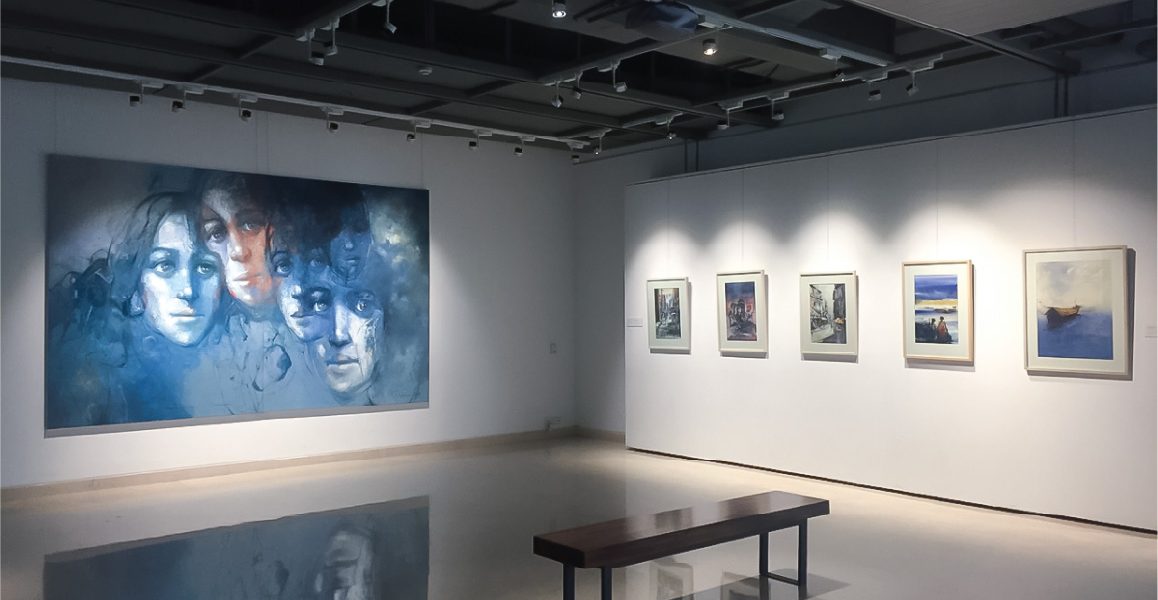Drawing from your extensive experience in the art industry, what are the economic and cultural ramifications that you can envision for the art world due to the COVID-19 pandemic?
Most people tend to spend discretionary income on art, which means galleries, dealers and ultimately artists will be hit hard. The local galleries are not profitable, to begin with, so, realistically speaking, we will see several closes down, unless gallery owners and artists get even more creative or supplement their income through other means.
What are the strategies that galleries are adapting to stay afloat and is government assistance expected? Due to Edge being a non-profit organization that funds the foundations’ educational program, are gallery sales or the educational program itself likely to be affected?
Since art is considered a luxury, we don’t expect to see any government assistance. Galleries will have to be savvy when it comes to cost-cutting and diversify and add other revenue streams.
The Edge Education program is very much dependent on donations, which of course, in the current climate will decline.
Amidst this outbreak, we were able to promptly host a design competition for emergency ventilators with the objective of increasing the healthcare capacity for the people. This is a must in the fight against COVID-19. We felt it was our duty to contribute to the larger community by highlighting our gifted engineers and scientists who can really make a difference.
As many galleries and museums begin to shift their physical presence towards an online experience via e-viewing platforms, are physical spaces likely to cease to exist as paying the rent becomes less affordable?
Most people look at galleries as a space for solace, reflection & relaxation. In my view, to truly appreciate art, one much experience it physically so there will always be a demand for physical spaces. Foundations can definitely help raise funds and use their network to raise awareness.
What do you see as being the some of the biggest hurdles in this current climate and can we expect any silver linings at the end of it?
Most of our funding comes from private events, such as exhibitions utilizing the Gallery space and Lakeside Plaza setting. With social distancing in place, this activity will most likely not return anytime soon. As for the silver lining, or more like a wakeup call to all, is the greater issue of social disparity and the pursuit of equity.
How will the foundation continue its programs at the end of this phase taking social distancing into consideration? Are other galleries considering taking any measures which may make people more comfortable?
We have postponed exhibitions and will review the matter in August, and continue to comply with socially responsible practices. We also plan on hosting online auctions & fundraisers in addition to one-on-one visits or private tours. Our building, Bay’s Edgewater houses a number of embassies and MNCs which require the highest standards of hygiene and sanitation in normal times; we have placed additional measures to ensure an environment where visitors feel safe & secure.
The Edge Gallery is a retreat, a place to contemplate and enjoy art in an enabling environment. So, once society picks up the pieces, we will encourage visitors to make appointments so that we can offer them safe distancing and staggered timing.
Who is an artist that has influenced you greatly and why?
Our childhood experiences and education shape our social leanings; this is a truism in art too. Having been brought up in the west and studied architecture, the masters of the modern and liberal movement, in both art and architecture, have been a great influence on me – from the great masters of cubism to the abstract expressionism of Miro, Mondrian, Pollock and Kandinsky. As for sculpture, I find the semi-abstract works of Henri Moore the most evocative and timeless.

